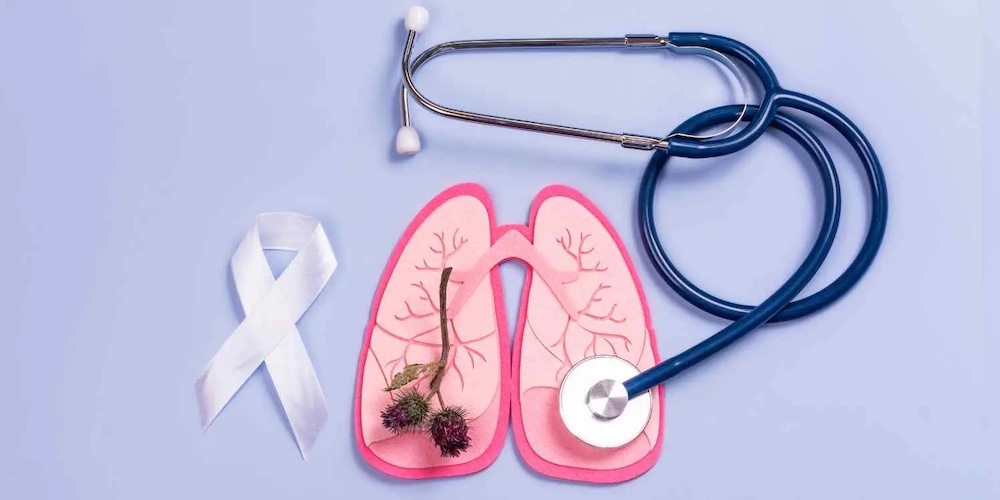Fighting TB

India has made significant progress under its National Tuberculosis Elimination Programme (NTEP), previously the Revised National TB Control Programme (RNTCP)
By any yardstick it is good news that TB incidence in India has dropped s by 21% from 237 per lakh population in 2015 to 187 per lakh population in 2024 – almost double the rate of decline observed globally at 12%, as per the World Health Organization’s Global TB Report 2025.
This is one of the highest declines in TB incidence globally, outpacing reductions noted among other high-burden countries.
India’s innovative case finding approach, driven by the swift uptake of newer technologies, decentralization of services and large scale community mobilization, has led to the country’s treatment coverage to surge to over 92% in 2024, from 53% in 2015 – with 26.18 lakh TB patients being diagnosed in 2024, out of an estimated incidence of 27 lakh cases. This has helped reduce the number of “missing cases” – those who had TB but were not reported to the programme – from an estimated 15 lakhs in 2015 to less than one lakh in 2024.
Also there is no significant increase in the number of MDR TB patients in the country. Treatment success rate under the TB Mukt Bharat Abhiyan increases to 90%, ahead of the global treatment success rate of 88%.
Similarly, India’s TB mortality rate has decreased from 28 per lakh population in 2015 to 21 per lakh population in 2024, reflecting significant progress in reducing deaths due to TB. This progress has been achieved through strong government commitment evidenced by a historic near-ten-fold increase in government funding to the TB programme over the last 09 years.
Since its launch in December 2024, India’s flagship TB elimination mission, the TB Mukt Bharat Abhiyan has achieved extensive reach, screening over 19 crore vulnerable individuals for TB across the country leading to the detection of over 24.5 lakh TB patients, including 8.61 lakh asymptomatic TB cases.
This proactive approach draws on both global and local evidence underscoring the prevalence of asymptomatic (sub-clinical) TB in high-burden settings.
India’s commitment to early detection is backed by the largest TB laboratory network in the world, comprising 9391 rapid molecular testing facilities and 107 culture & drug susceptibility testing laboratories.

In addition, to bolster community screening efforts, over 500 AI-enabled hand-held chest x-ray units are available across the country, with an additional 1,500 machines being delivered to the States/UTs. Through 1.78 lakh Ayushman Arogya Mandirs across the country, the programme has been able to decentralize services and take TB care closer to communities.
The Ministry of Health and Family Welfare has also expanded nutritional support provided to TB patients. The Direct Benefit Transfer (DBT) under the Ni-kshay Poshan Yojana (NPY) was increased from ₹500 to ₹1000 per month per patient for the entire treatment duration. Since its launch in April 2018, ₹4,406crores have been disbursed directly into the bank accounts of 1.37crore beneficiaries.
Furthermore, to date, 6,77,541 individuals and organizations have enrolled as Ni-kshay Mitras and distributed over 45 lakh food baskets to TB patients, reflecting a strong and growing public-private-community partnership in India’s fight against TB.
In a strong demonstration of whole-of-society engagement, the Ministry has also harnessed the energy of over 2 lakh youth volunteers to strengthen community participation in the fight against TB. Over 2 lakh My Bharat volunteers have come forward to serve as Ni-kshay Mitras, providing psychosocial support and encouragement to TB patients across the country.
This vibrant youth-led movement reflects India’s commitment to making TB elimination a people’s movement and ensuring that no patient feels alone on their journey to recovery.
The Ministry has also scaled up a differentiated TB care approach across the country, whereby high risk TB patients are identified based on clinical parameters and presence of co-morbidities that impact treatment outcomes and are accordingly provided individualised and tailored treatment to ensure recovery. Also the ASHA workers have been trained to identify early warning signs in TB patients in their areas for referring the TB patients immediacy to higher treatment facilities.
It is true that there are persistent challenges hindering TB elimination such as the high burden of multidrug-resistant TB (MDR-TB), infrastructure gaps in rural areas, social stigma, and environmental factors like air pollution. Continued investment and community engagement are crucial to overcome these obstacles and make a TB-free India a reality.
The central government is committed to TB Mukt Bharat Abhiyan continuing its focus on pro-actively screening all vulnerable population including asymptomatics & individuals in congregate settings through hand-held X-rays, early detection of all patients using upfront molecular diagnostics and providing them with comprehensive high-quality care – treatment, nutritional and psychosocial support to ensure full recovery and prevention of community transmission.
This integrated approach will further reduce TB incidence and mortality, bringing the country closer to the goal of a TB-Mukt Bharat.


